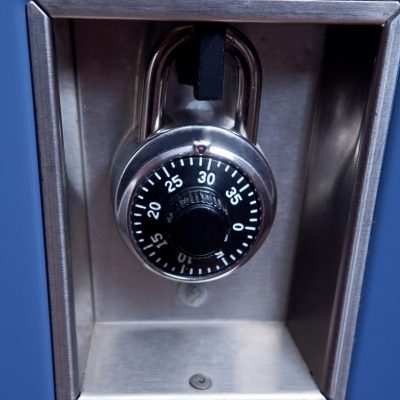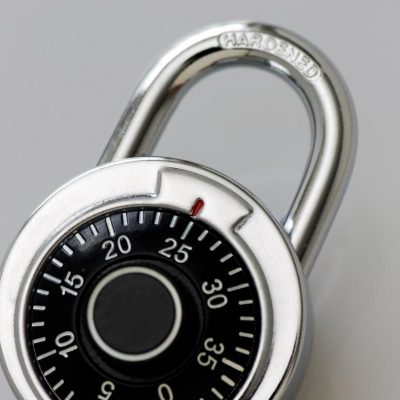
It should go without saying that we must safeguard our possessions and valuables. The Australian Bureau of Statistics published data last year showing that over the previous four years, there had been a significant increase in the number of robberies, burglaries, and thefts. In Australia, it’s more and more important to keep your possessions secure if you don’t want to become a victim of theft or burglary.
Fortunately, there are numerous ways to protect your belongings and valuables. One of the most typical methods is the use of various lock and key configurations.
To Purchase locks or to know more about other ways to protect your belongings and valuables contact Our Locksmith Brisbane now!
Things to know about combination locks
Combination locks are one of the first lock types that come to mind when discussing basic locks and keys. Instead of requiring a key to unlock, this type of lock opens by the proper alignment of the parts inside. The order of symbols programmed into the lock determines how the interior components are aligned. To unlock, users can either turn the dial or enter a passcode using a mechanical or electronic keypad.
Types of combination locks
Today’s combination locks come in a wide variety of styles, dial or keypad configurations, and levels of security. In Australia, the following are some of the most typical types of combination locks:

Multiple Dial Locks
One of the most basic types of combination locks available is a lock with multiple dials. Bicycle chains, briefcases, travel bags, and smaller padlocks that you might use on your suitcase’s zipper all frequently use multiple dial combination locks. The attachment of this lock is activated by a grooved pin that is hooked into rotating cams with indentations. When the cams’ indentations line up with the grooves or teeth on the pin, the lock opens.
Combination locks with multiple dials are typically recommended only for basic locking needs because they are among the least secure. This is due to the fact that tightening the pin while the cam is rotating will cause the tooth to click into the indentation. These clicking noises can be used by would-be thieves with enough experience to open multiple dial locks without knowing the combination. Use of other types of locks is advised if the material you want to secure is sensitive or priceless.
Single Dial Locks
This kind of lock is frequently used in safes, some locker cabinets, and particular padlocks as well as other materials that call for higher-security locks. A rotating dial and parallel cams are used in this kind of lock. The dial must be turned clockwise until it reaches a specific symbol, then anticlockwise until it reaches the following symbol in the code. You must repeat this process of rotating the dial in opposite directions until you have completed all of the symbols in the set combination. The notches will align and the lock will open once all the characters in the combination have been entered correctly.
Even though single dial locks are more secure than multiple dial locks, a skilled individual can still decipher the code if they pay close attention to the internal cams and the dial’s clicks. Consequently, you should still use caution when selecting this kind of lock to protect your belongings or valuables.
Other designs
There are other kinds of combination locks available besides the traditional single dial and multiple dial clocks, like the numeric sequence keypad lock. In addition to its mechanical design, this combination keypad lock also uses electronic circuitry to boost the level of security it offers.
Another is a modification of the typical dial-based combination locks with various passcodes programmed for various groups of people. This kind of combination lock can keep track of the password or combination that was used at any given time and has a wide range of acceptable combinations. This kind of combination lock is powered by a battery or a tiny generator set.

Changing Combination Locks
Your combination locks’ code may need to be changed for a variety of reasons, including the possibility that it has been compromised and your desire to regularly update or change your combination for security. Whatever your motivation, it’s crucial that you understand how to alter lock combinations for future use.
Depending on how your chosen combination lock was made and how it was designed, there are numerous ways to change the combination on a dial lock.
For single dial locks, here is an illustration of how to modify or reset the combination lock:
- Determine your lock’s “change” position. The majority of manufacturers set their combination locks to change positions at 1:00 or 11:00 on the dial.
- After determining the change position, you must choose the new passcode combination you’ll employ.
- Your dial lock might require a real key that is locked inside the lock’s back depending on how it was made in order to return to neutral mode. If your combination lock requires a key, make sure you insert it correctly so that the lock will accept your new combination.
Here are the steps to changing your combination if you currently use a padlock with a multiple dial combination lock:
- By raising the shackle, you can unlock the lock.
- Press the shackle all the way down after rotating the shackle 90 degrees anti-clockwise.
- To set your new combination, hold down the shackle of your lock and turn each dial to the desired position.
- You should now be able to program your new code into your lock after lifting the shackle.
Learn to change your combination locks and more with Stronghold Locksmiths
If you need to change the security code on your combination lock, for whatever reason, Stronghold Locksmiths are here to help you with all your combination lock issues. Whether you have been locked out of your property, or you need a deep resetting of all your combination locks, Stronghold Locksmiths are ready to help.
The friendly and professional team at Stronghold Locksmiths, conveniently located in Brisbane, are happy to assist you 24 hours a day, 7 days a week.
We understand that lockout problems happen at any time of the day, so we are ready to help you with all your lock emergencies.
Contact us now at 1300205512 to find out more about how we can help!
